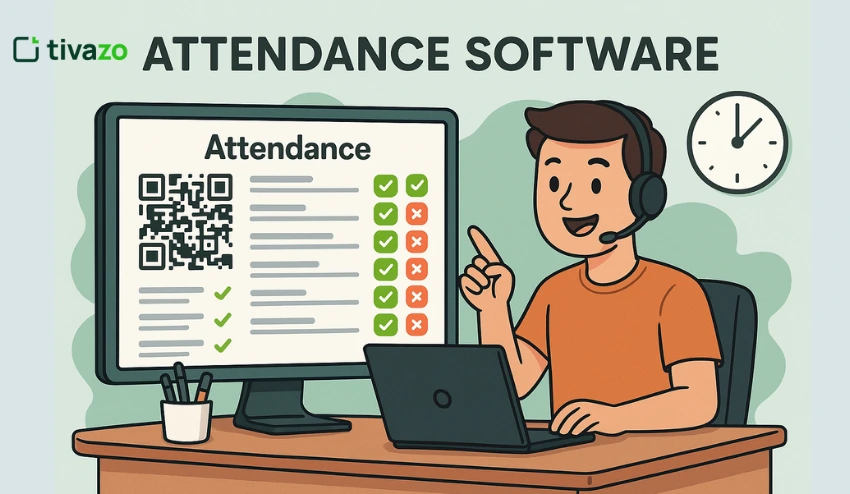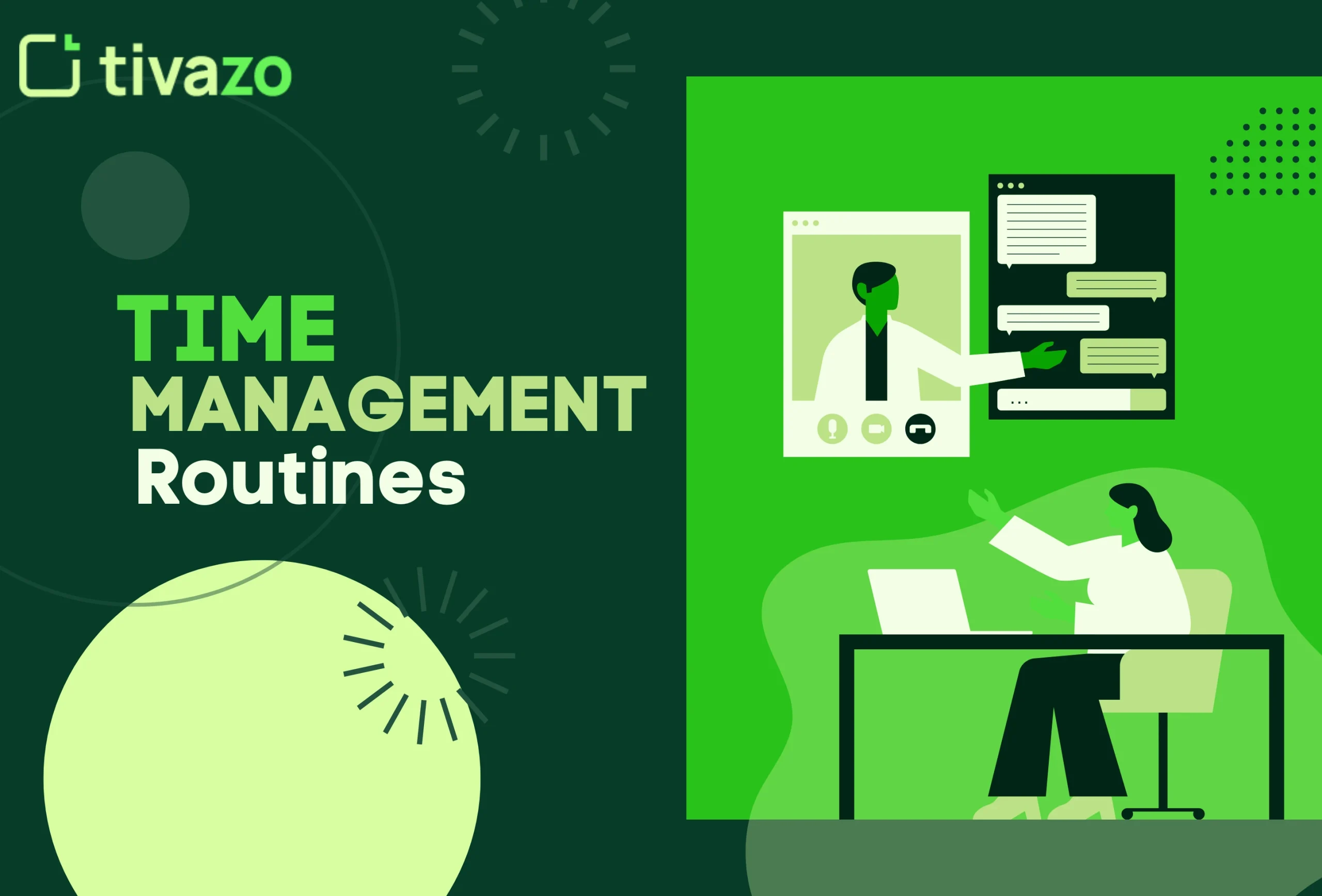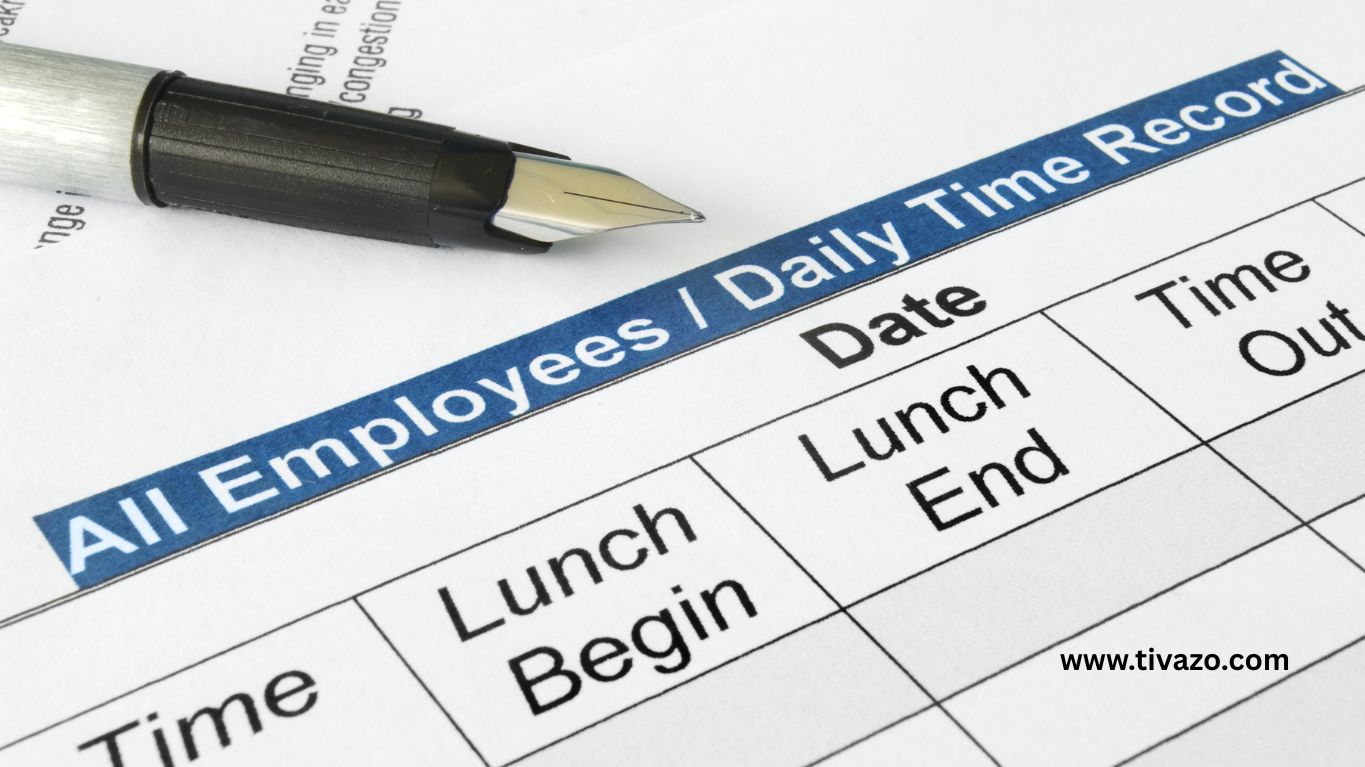The days of manual punchcards, spreadsheets in Excel, or yelling across the office to see whether someone punched in are long gone. In the world of remote and hybrid work, attendance software has transformed from a tool to a cornerstone of your team’s productivity, transparency, and legal compliance.
No matter your size – town start-ups or enterprise level teams – utilizing a beneficial attendance management system ensures your people feel accountable, valued and protected. It also allows leadership to manage staffing levels, budget line items and staff time, with data and not guesses.
What makes attendance software not simply beneficial, but critical in 2025?
Let’s look at some of the top 5 tools in the marketplace today and what really matters, plus how to determine the best fit for your team.
Key Highlights:
- What Is Attendance Software?
- Choose the Right Attendance Tool
- Attendance Software Tools
- Benefits of Attendance Software Tools
- Cloud-Based vs On-Premise Attendance Software
What Is Attendance Software?
Attendance software refers to a digital platform designed to track employee hours worked. Attendance software provides businesses with a record of when employees clock-in, clock-out, take breaks, and/or work overtime. Instead of relying on archaic forms of time tracking (e.g., punch cards, manual timesheets, and Excel logs), attendance software provides organizations with real-time time tracking that supports remote teams and onsite teams. Attendance software does much more than track time.
Today’s attendance platforms provide businesses with real-time analytics, GPS-based geofencing, and biometric logins that eliminate fraud (e.g., buddy punching). Attendance software includes functionality to track paid time off (PTO), track leaves, track paid time, and provide timely productivity dashboards. Most systems integrate seamlessly with payroll and HR software to ensure percentage points are compensated correctly, employers are compliant with labor standards, and timezones are tracked correctly.
Using attendance software can benefit all organizations; even a startup or a global enterprise. Attendance software can reduce administrative burden on employees and employers alike, foster a culture of accountability and transparency, and ultimately empower organizations to run smarter, more efficiently, and more ethically.
How to Choose the Right Attendance Tool?
Selecting the proper attendance software isn’t just about meeting your minimal requirements; it’s about finding a solution to support the way your team operates now and moving forward. There are so many tools to choose from so do not be swayed by flashy features or low pricing.
The true value in any platform is understanding how it will support your day-to-day operations and examples of the ways it may integrate into your systems as your grow as a business. Consider who will use the tool: Is that person office-based, remote, or out in the field? Will HR be running automated reports?
Is your payroll dependent on an accurate foundation of timekeeping? Selecting the right tool requires consideration on functionality, flexibility, and forward-thinking especially as work becomes much more dynamic and distributed. The list below will give you some of the most important components to check on before you commit to an attendance platform
- Cloud-based access for remote or hybrid teams
- Mobile app for field workers or freelancers
- Integration with your HR, payroll, or project management software
- Custom rules for shifts, overtime, and compliance
- Real-time reporting for visibility across departments
Now let’s have a look at the 5 best attendance software tools for your modern team
Attendance Software Tools
Attendance Software Tools are:
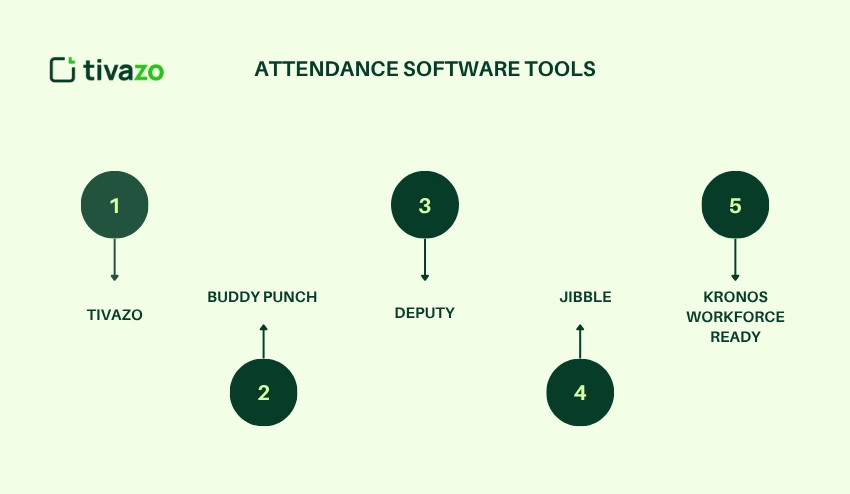
1. Tivazo
Tivazo is an all-in-one tool that is made for hybrid and remote teams that need basic time tracking with analytics. Employees can easily clock hours in, and out with a user-friendly design, while managers will benefit with idle-time detection and reports that pull apart productive hours from non-productive hours.
Teams can enter time manually or automatically, giving freedom to employees to log their hours however works best for them, which is especially helpful for freelancers and startups. Tivazo can also export in commonly used formats like Excel and PDF, to simplify payroll and the auditing process. However, with Admin, Manager, and User role capabilities for tiered access, it is also suited well to even small to medium-sized companies, and has the pricing to back it up, including a free plan for up to 10 users.
2. Buddy Punch
Buddy Punch is excellent for companies with employees working in a variety of locations. Using geofencing with GPS and facial recognition means that Buddy Punch ensures employees are clocking in from where they are authorized to do so. This is especially useful in trades such as construction and retail where workers frequently change locations. Buddy
Punch also creates customized shift scheduling so a business can schedule their hours around their business needs. The PTO request and approval workflow makes managing leave requests seamless. The integration with popular payroll and accounting software like QuickBooks and ADP makes the administrative workflow easier.
Perhaps best of all, any attendance irregularities can trigger real-time notifications, and regulatory compliance notifications keep everything running smoothly.
3. Deputy
Deputy specializes in complex shift scheduling in industries like retail, hospitality, and healthcare. Deputy helps managers use an intuitive drag-and-drop scheduling tool that allows managers to easily build employee rosters, immediately revealing conflicts at the time of scheduling and ensuring compliance with labor laws.
Deputy provides real-time attendance alerts while tracking labor cost against budgets, assisting businesses with maximizing the presence of employees and respecting budget caps. Its kiosk mode, enhanced with facial recognition, is an additional layer of verification at clock-in. Deputy is an excellent choice for businesses that rely heavily on hourly work and have changing shift needs.
4. Jibble
Jibble’s biggest strength is its biometric solutions for attendance validation, and the fact that it controls attendance via geolocation and IP filtering. Jibble’s combination of facial recognition, as well as GPS and IP filtering, eliminates unauthorized clock ins as well as greatly reducing time theft – thus improving the accuracy of attendance data. This, combined with Jibble’s AI-generated productivity reports allows managers to have real insight into how employees are spending time (the facet most commonly misrepresented).
Jibble has the full suite of HR tools such as leave management and timesheets, which allow for a seamless HR flow, and integrations with collaboration tools such as Slack and teams, allows for quick access to attendance management directly from the application employees use most frequently. This makes Jibble a great tool for organizations needing accuracy in attendance, and for security and theft reasons.
5. Kronos Workforce Ready
Kronos Workforce Ready is a powerful, scalable attendance and workforce management platform designed for medium to large enterprises. It offers robust scheduling, time tracking, and compliance features that can handle complex labor regulations and large employee populations. Kronos supports biometric verification, mobile clock-ins, and geofencing to ensure accurate attendance data across multiple locations. Its analytics capabilities provide actionable insights into labor costs and employee productivity.
The platform also integrates seamlessly with payroll and HR systems, simplifying administrative processes for enterprise teams. Although Kronos is a premium solution with a higher price point, its depth of features makes it ideal for businesses with complex attendance and labor management needs.
Hidden Benefits of Attendance Software (That Nobody Talks About)
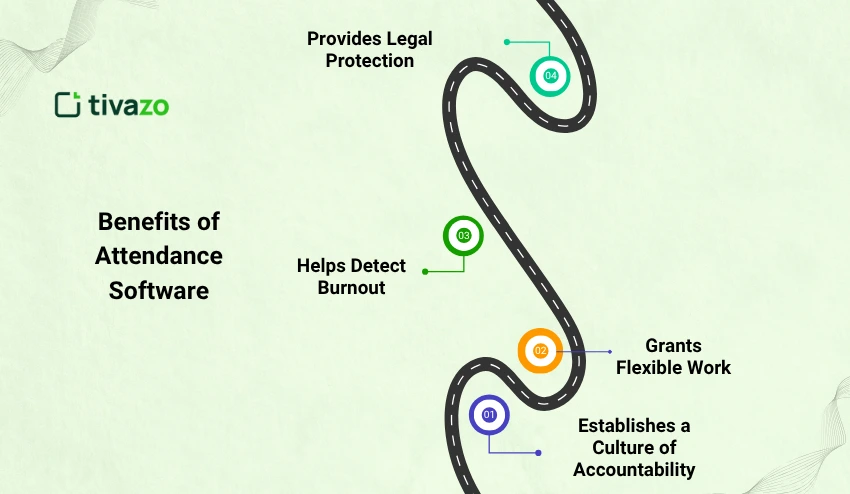
1. Establishes a Culture of Accountability
By recording and displaying employee work hours, attendance software creates a culture of accountability since employees know their time is transparent. The shared transparency of the attendance information means there is less need for constant, direct supervision, or micro-management because employees know their visible presence is being accounted for. In knowing their attendance is being consistently and equitably tracked, employees are encouraged to model punctuality and commitment, which leads to healthy, collective discipline and trust. Over time, this culture of accountability will evolve into better teamwork and morale.
2. Grants Flexible Work
The new generation of attendance tools has modernized attendance tracking by allowing employees to clock their hours remotely with a mobile app or online portal, meaning employees can clock in or out from almost anywhere and at any time. The new flexibility of attendance is suited to today’s work in flexible settings, including remote work, flexible schedules, and working in the field, without sacrificing accurate attendance capturing.
The new flexibility empowers employees to take control of their work hours within specific, agreed-upon conditions, which allows them to seek a work-life balance that suits them, and may even lead them to a position of sustainability in the workplace (especially at the end of those work days, with an eye toward future engagement). While introducing flexible hours allows employees to balance their work-life, managers are able to maintain needed structure and authority to ensure the business serves its needs.
3. Helps Detect Burnout
Sophisticated attendance software does more than track hours worked; it can identify behaviors that indicate fatigue or burnout, such as working excessive overtime, skipping breaks, or having unusual hours. It highlights patterns showing that an employee may be working too much, allowing HR and management to intervene before feeling of burnout arises to affect their wellness or productivity—for instance, adjusting schedules or finding support resources. In the end, these indicators contribute to a more healthy, more sustainable workforce, and can help reduce turnover and sick days.
4. Provides Legal Protection
Accurate and detailed records of employee attendance are crucial evidence during disagreements relating to hours worked, wage claims or labor laws. By keeping accurate time records, companies protect themselves and employees from costly lawsuits or formal audits. Keeping time records also assures that employees are receiving remuneration for their work, and supports the development of mutual trust between employer and staff. Employers willing engage in fair labor practices assists in building trust. This is particularly true in heavily regulated industries, where employers need reliable and sufficient attendance records and data to meet all required government conditions or avoid penalties.
Features to Watch in 2025
The world of workplace technology is advancing at light speed, and attendance software is changing from just tracking hours to a more powerful method of workforce optimization and employee well-being. In 2025, we expect attendance systems to include more advanced technologies that allow deeper insights and smarter automation. These features will enhance the ability of businesses to track not just time, but trends in the workforce, impact sustainability, support mental health, and improve the clock-in experience to be seamless and user-friendly.
- AI-based absenteeism predictions
- ESG & sustainability insights (e.g., energy use per logged hour)
- Mental health tracking through timesheet patterns
- Voice-activated clock-ins
Final Comparison Table
| Tool | Best For | Unique Feature | Pricing |
|---|---|---|---|
| Tivazo | Remote teams | Idle time + screenshot | Free/$3 user/mo |
| Buddy Punch | Field/mobile staff | GPS & face recognition | From $2.99/mo |
| Clockify | Freelancers/small teams | Unlimited free plan | Free/$3.99+ |
| Deputy | Shift-based businesses | Smart scheduling | From $3.50/user |
| Jibble | Compliance-heavy teams | Biometric login | Free/$2.50+ |
Why Manual Attendance Tracking Fails Modern Teams
Why Manual Attendance Tracking isIneffective for Today’s Teams An astonishing number of organizations still use outdated tracking mechanisms, like spreadsheets andpunched cards, to track attendance fortheir employees. The problems with manual tracking systems,however,areseriousbecausethey are inherently prone to error – missed entries, wrong times, etc.,evenoverlapping times.
These errors can impact payroll accuracy and employee satisfaction. Manual systemscanalsoallow for time theft or “buddy punching,” where employees punch in for eachother, therebyputtinga dent in productivity and increasing labor costs. Sincemanual attendance tracking systems leaveno audit trail, organizationscannot verify the records during compliance audits or employee disputes,andthey offer zero real-time visibility – managers donotknow who is working, when they are working, which binds scheduling and future resource plans.
Modern attendance software solves these problems by providing integrated automated and time-stamped logs that are managed on one platform. This reduces errors,and as teams scale, automated attendance tracking does too. Businesses can keep accurate, compliant, and transparent records of employee attendance with no hassle.
Cloud-Based vs On-Premise Attendance Software: What’s Better?
Today’s top tools are cloud-first, but here’s how they compare:
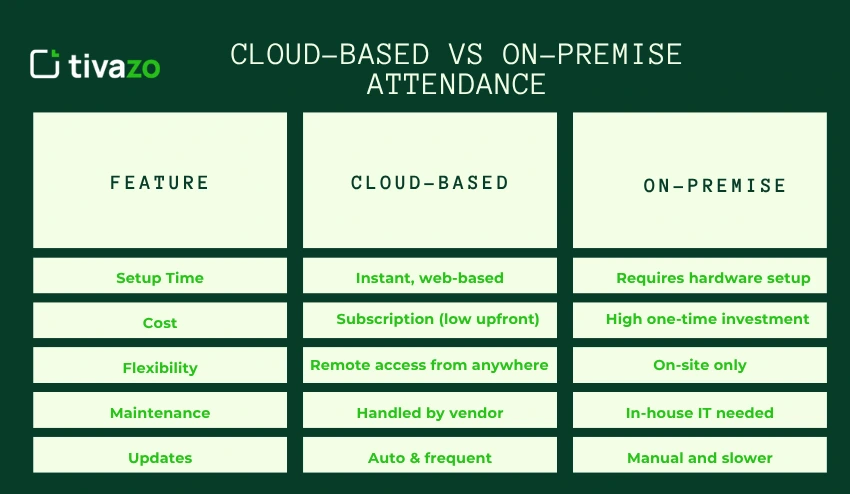
Unless you’re a highly regulated company, cloud-based attendance tools win for most teams.
Final Thoughts: Choose for Your Culture, Not Just Your Budget
Choosing the right attendance software isaboutmuchmore than just finding somethingthat works with your budget or isthe most common. It’s about finding a solution that fits your company’s culture and values. The best attendance platforms do more than just track hours, they help create a culture of trust, transparency, and accountability in your team.
Whether you want more structure with complex schedules, better insight into employee performance or want to minimize employee time theft, the right tool to facilitate a solid work structure should just be a regular part of daily operational tasks and the company’s culture. When you consider a system that fits specifically to your work style – remote, shift-work, or hybrid -and that specifically addresses your industry needs, you create an environment employees want to work in, where they feel respected, trusting, and empowered.
As a company, if you make the investment in attendance software that aligns with your culture,you are creating simplicity in management tasks but ultimately you are accelerating a motivated, productive, trustworthy, and respectful workforce,where the structure is clear and consistent.
